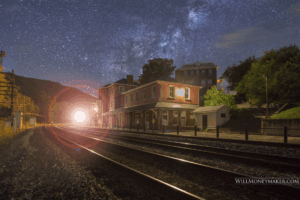“If I could tell the story in words, I wouldn’t need to lug around a camera.” – Lewis Hines
Photography is a major part of many cultures. Whether for career or catharsis, photography is a valuable skill in today’s digital, open-source world. Here are some photography tips that can guide you in your journey.
Photo Backgrounds
When working inside, cloth backgrounds are the most popular choice. However, if you want to avoid a studio feel, be sure not to clutter your background. You can blur the background easily by having your subject placed farther from the items behind them. Plain backgrounds are most desirable for quality images.
Posing
Rules and guidelines for portrait photography are endless. Here are just a few of the basics:
- Arrange hair and accessories.
- Bring the chin forward (to avoid any bulging under the face).
- Pull the arms slightly away from the torso (again, avoiding excess bulge).
- Tilt one shoulder towards the background.
- When photographing multiple subjects, get them close together. Try to make triangles with their faces and don’t put one person’s face directly above another.
- Get up close!
Rule of Thirds
In every image, there are imaginary lines that break the picture into thirds. These imaginary lines run both horizontally and vertically. In most cases, the rule of thirds applies to landscape photography. When taking an image of a landscape, ocean view or mountain range, you need to pay attention to the horizon. Have the horizon cut across the top third or the bottom third of the image. Never have it in the middle. It cuts your image in half, making your image look flat.
Composition
Photography is just like any other visual art, you have to pay attention to the whole. When taking an image, be sure to look at the background to make sure there are no strange cutoffs or someone photo-bombing what would be a great picture. Also, move your subject to the side of the frame instead of always keeping it centered. Try visiting personal photography sites to get ideas and tips, and to see what your fellow photographers are doing.
Focus
When your camera is in auto mode, it focuses on whatever lies beneath lens focus points. To focus on something else, put that object in the center and depress the shutter down halfway.
Manipulating Light
Shutter speed is just one of the methods used to manipulate light. This term refers to how long the shutter is open and letting in light. Longer shutter speeds mean letting in more light, resulting in brighter images. Shorter shutter speeds mean less light and darker images.
Using a Flash
If you are taking pictures in a darkened setting or inside, a flash is a huge help. Know how far your flash reaches so that you can ensure your light will be useful.
Finding Natural Light
To avoid highlighting features, such as wrinkles, be sure to use a soft light that shines straight onto a face. Light coming from the side can increase shadows on a face, which distorts the image.
Portrait vs. Landscape
There is often a strange urge to keep your camera strictly in the landscape position. Don’t be afraid to turn that camera sideways and use the portrait position for any subject that is taller than it is wide. Also, you can use your camera as a spaceship and get a different perspective of your subject. The effect of such a small move will be amazing.

Choosing Your Mode
Many beginners like to stick to the auto mode, which can greatly limit your photos. Don’t be afraid to switch it up. Check your camera’s guide to see what each symbol on your camera means.
It’s important to remember that photography is a skill that takes practice. Henri Cartier-Bresson said, “Your first 10,000 photos are your worst.” Just know that with time, your skills will improve. You’ll be glad you decided to pick up that camera.





